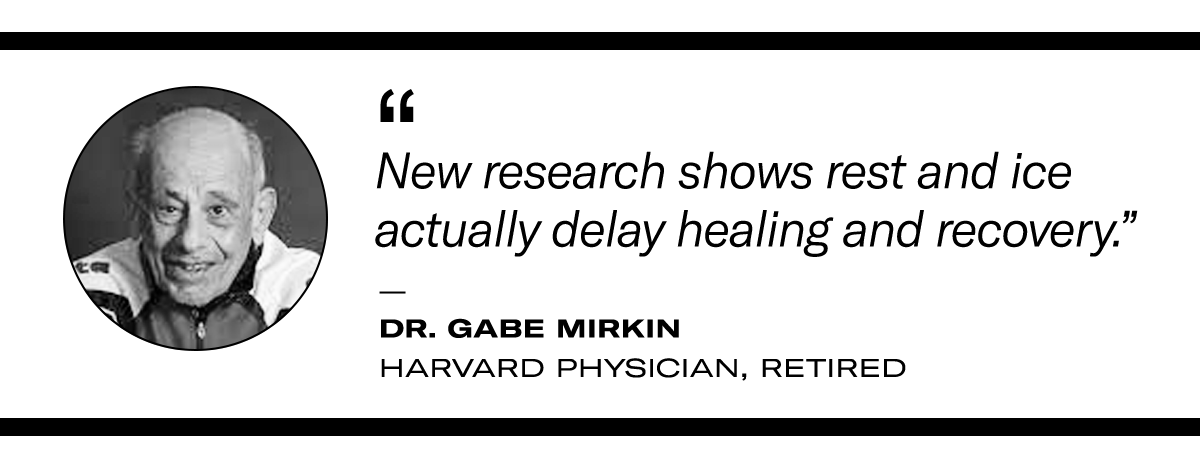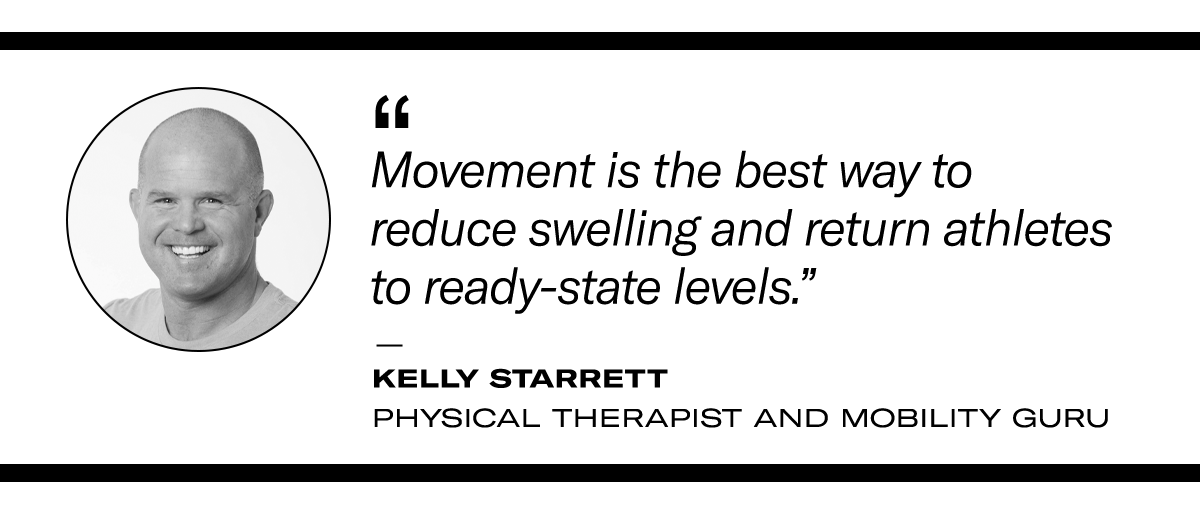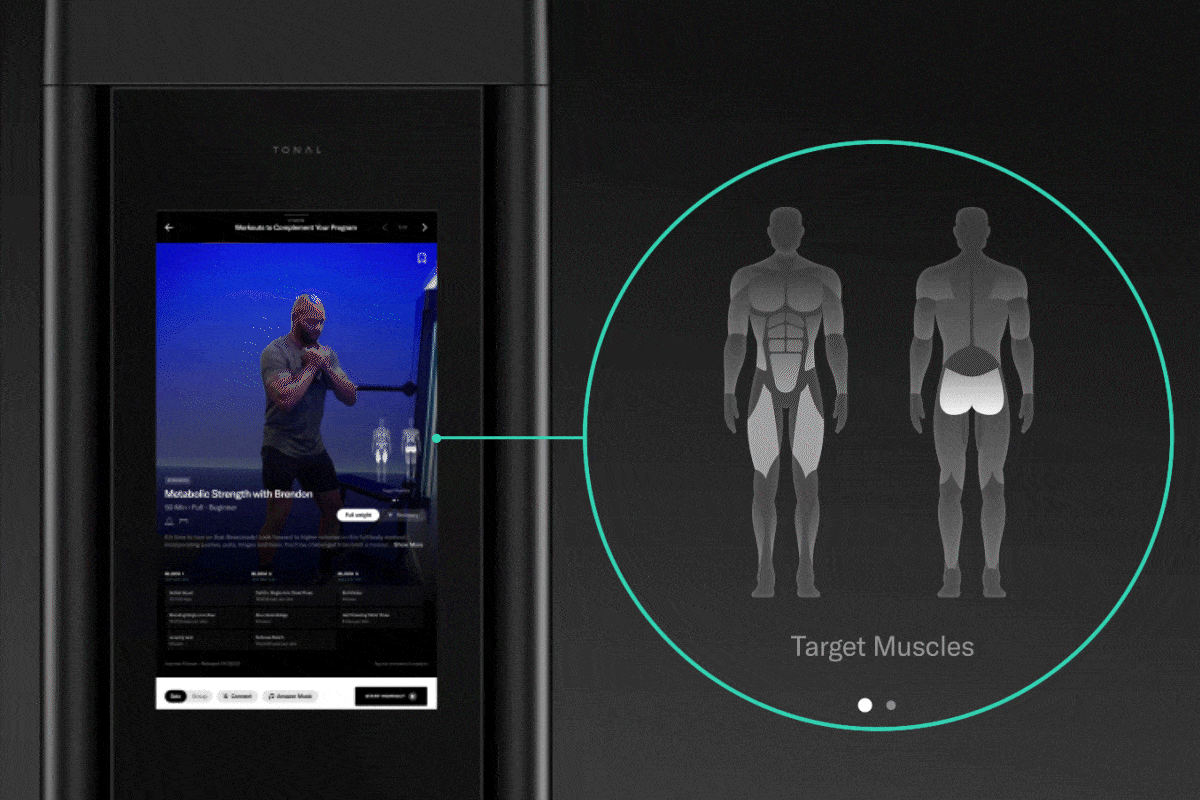You may think you’re helping yourself heal, but you’re actually delaying recovery.

When your knees ache after a heavy squat day, your elbow flares up after a weekend tennis match, or your daughter bumps her head against the banister, it’s likely you pull an ice pack out of the freezer to soothe the aches and pains. You do this, first, because you always have; it’s probably what your parents did for you. Second, you do it because you’ve heard icing reduces inflammation and facilitates healing.
So it may surprise you that no piece of published, peer-reviewed research has ever definitively shown that ice is beneficial to the healing process. Science actually proves the opposite. It’s a cold, hard fact that ice delays healing, increases swelling, and can cause additional damage to healthy tissue.
What the Research Shows
The three stages of healing for both soft tissue and bone injuries are inflammation, repair, and remodeling. Suppressing the first phase slows down the entire process. When tissue is damaged, the immune system initiates an inflammatory response, which a 2010 study showed is necessary to heal damaged tissue and repair muscle. The body deploys its repair and cleanup crew in the form of macrophages, white blood cells that engulf and digest cellular debris. They produce the protein insulin-like growth factor 1, which is required for muscle repair and regeneration. The same study showed that blocking inflammation delays healing by preventing the release of IGF-1.
A 2013 study showed that ice constricts blood vessels and allows less healing fluid to reach the injured area. This research also showed that topical cooling delays recovery from eccentric exercise-induced muscle damage, while a 2015 study showed cold-induced vasoconstriction can kill otherwise healthy tissue. And as far back as 1986, researchers showed when ice is applied for a prolonged period, lymphatic vessels become more permeable, causing a backflow of fluid into the interstitial space. That means local swelling at an injury site will increase, not decrease, with the use of ice.

It’s also important to understand that having very sore muscles from a hard workout is not entirely different from a torn muscle. Soreness is just milder soft-tissue trauma. The body’s repair of those small tears is what creates adaptation. When you immerse yourself in ice water to alleviate that soreness—the ever-popular ice bath—you are actually substantially reducing the gains in muscle mass and strength that you work so hard for in your training sessions by stunting the cell activity crucial for building stronger muscles. When you hit the cold tub after a hard workout, thinking you’re prepping yourself for tomorrow, you’re actually delaying recovery.
Inflammation vs. Swelling
“The terms ‘inflammation’ and ‘swelling’ are often used interchangeably, but they are different, and only the latter is bad,” says Gary Reinl, author of Iced! The Illusionary Treatment Option. Reinl explains that while inflammation heals, swelling is the accumulation of fluid, blood, and damaged cells at the end of the inflammatory response. “If not evacuated, this congestion suffocates otherwise healthy cells that were not involved in the initial trauma, causing more damage,” he says.
Most of the particles are too large to move through the circulatory system so they must instead be evacuated through the lymphatic system, which is passive, and fully reliant on muscle activation. Movement is necessary to propel fluid through the vessels. Sitting still with an ice pack creates the exact opposite effect. Remember when your dad told you to walk it off? He was right; a 1999 study showed loading damaged tissue accelerates healing of bone and muscle tissue, while prolonged periods of inactivity promote aberrant tissue repair.
If Not Ice, Then What?

Even with an acute injury, you want to allow the body to get the good stuff in and the bad stuff out. “The very best mechanism to reduce congestion and swelling in a human being is muscle contraction,” says physical therapist and mobility guru Kelly Starrett. “Movement is the best way to reduce swelling and return athletes to ready-state levels.”
Moving sore muscles is easy, with the use of stretches and range-of-motion exercises done with bodyweight, light weights, or Tonal’s Recovery Mode. Acute injuries, of course, are more complicated. No one recommends running or lifting on a torn ACL, but if you sprain your ankle and your physical therapist clears you to stand on it, don’t hesitate to do it.
If an injury is too painful or the area is too fragile for any type of voluntary movement, Starrett suggests utilizing one of the many neuromuscular electrical stimulation, or e-stim, devices on the market, which create non-fatiguing muscle contractions that activate the lymphatic system to pump out waste and congestion. He also recommends compression, and non-steroidal anti-inflammatory alternatives such as turmeric and fish oil. Turmeric has been shown to be as effective as ibuprofen for post-surgical pain and delayed-onset muscle soreness, while fish oil supplements can relieve arthritis pain.
So Then Why Did We Start Icing in the First Place?
Harvard physician Dr. Gabe Mirkin invented “the RICE protocol” for injury management in 1978. The acronym stands for rest, ice, compression, and elevation, but Mirkin now says he was wrong about rest and ice. At age 87, he still writes and speaks frequently on the topic.
“New research shows rest and ice actually delay healing and recovery,” Mirkin says. “We now know the immune system uses inflammation to deliver the chemicals your body needs to heal, and when you ice, you dampen the immune response and delay healing. Ice temporarily relieves pain, so you think you’re recovering faster, but science has shown you are not.”

Then Why Do Doctors, Therapists, and Pro Athletes Still Use Ice?
The short and obvious answer is because they always have. Athletes are the same way; if they grew up using ice, they often continue to do it when they reach the pros. Big-name basketball, baseball, and football players are often seen on television with ice packs plastic-wrapped to their knees and shoulders, or sitting chest-deep in tubs of ice.
“We’re all products of the system,” says Starrett. “When I injured my ankle in high school, I stuck it in an ice bucket. In PT school, ice is taught as a treatment modality, and it’s still the standard for post-surgical recovery.”
Starrett, however, is working hard to change that standard. Rather than ice post-surgery, Starrett immediately puts his patients—and his own family—on a decongestion protocol that involves whatever movement they can tolerate; he rehabbed his daughter’s spiral tibial fracture, his wife’s hip replacements, and his own ACL all without ice.
“There is an accepted model of healing, tissue adaptation and remodeling,” Starrett says. “Either you don’t understand the healing process, or ice is the wrong way to facilitate it.”
Still, ice is the cheapest, most readily-available and non-addictive pain reliever on the planet. So, if you truly cannot tolerate the pain in the moment, or your kid won’t stop screaming, go ahead and grab an ice bag for an analgesic effect. But recognize that you are, in fact, delaying the healing process, that faster recoveries happen without ice, and that the pain will return once the tissue rewarms and the inflammatory response resumes.
The information provided in this article is for educational and informational purposes only. Individuals with pre-existing health conditions, injuries, or concerns should consult with their healthcare provider before trying a new exercise or nutrition regimen.


